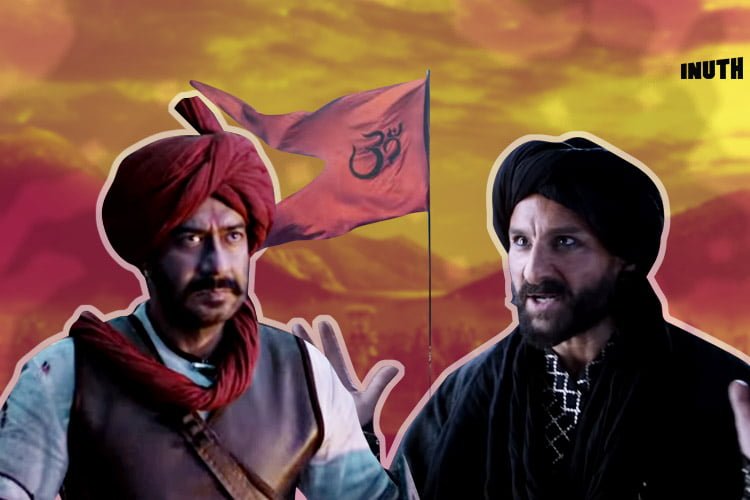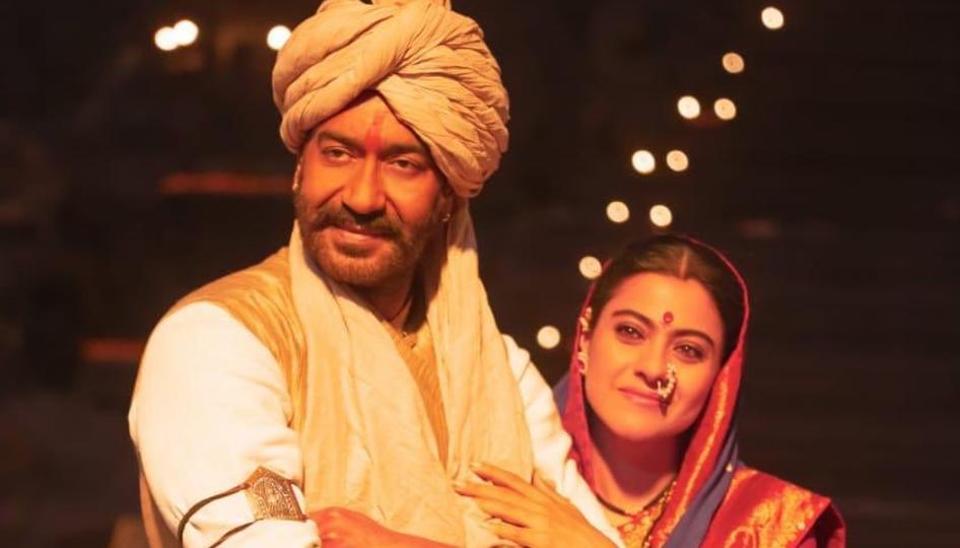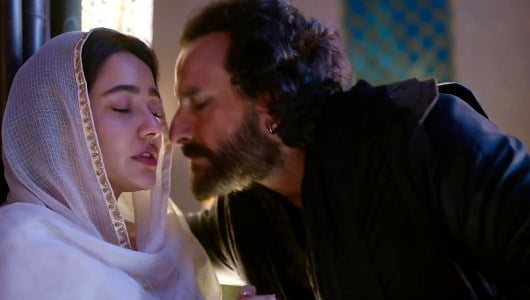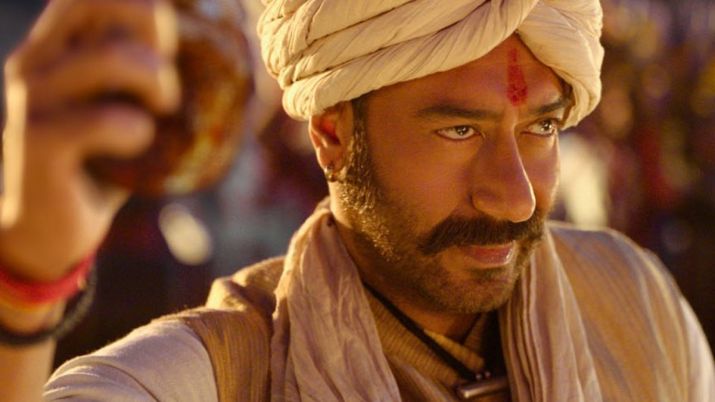Padmaavat had not even begun fading from our memory, when Bollywood presented us with two other similar films: Panipat and Tanhaji. Despite being three different films portraying three different regimes and three different time-periods, the three films are so similar in essence, that they can be summed up in a line. A hypermasculine, idealistic Hindu warrior/king fights against a savage-looking, meat-eating, bloodthirsty ‘invader’, and ends up sacrificing his life in the end. All the three films are so preoccupied with the difference between the good Hindu and the bad Mughal/Afghan/Khilji, that they end up using every single trope in their arsenal to amplify the difference, blind to the consequences of the misrepresentation.
Tanhaji: The Unsung Hero
Cast: Ajay Devgn, Kajol, Neha Sharma, Saif Ali Khan
Director: Om Raut
Tanhaji: The Unsung Warrior attempts to narrate the story of Tanhaji Malusare, Shivaji’s military leader, and his quest for the fort of Kondhana. Aurangzeb sends his Mughal troops under the leadership of Udaybhan Rathore to fight against Tanhaji. Therefore, Udaybhan, despite being a Hindu, represents the Mughal empire. Which is why, just like Khilji (Padmaavat) or Abdali (Panipat), he is portrayed in a very negative light. Quite literally, Udaybhan and his troops are dressed in black, while Tanhaji and his troops are dressed in white.

just like Khilji (Padmaavat) or Abdali (Panipat), he is portrayed in a very negative light. Quite literally, Udaybhan and his troops are dressed in black, while Tanhaji and his troops are dressed in white.
The one word we hear the most in the film (even more than ‘Tanhaji’) is ‘bhagva’ (saffron). It represents the Maratha empire helmed by Chhatrapati Shivaji Maharaj. However, saffron is also associated with the right-wing Hindu nationalism, and under the present circumstances, this film seems like a salutation to the Modi-Shah ‘regime’. This jingoistic, Hindu nationalism against the Mughals, who become the ‘other’, is evoked in every alternate scene. In fact, in one of the scenes, Udaybhan himself takes pride in the fact that the Mughals are self-proclaimed opportunists. The audience’s applause during such scenes is a disheartening testament to the communal angst fostered by the present government.
Also read: Is Bollywood Selling Islamophobia By Objectifying Muslim Characters?
Portrayal Of Women’s Characters
From the first scene itself, the tone of the film is hypermasculine. Ajay Devgan’s introductory scene itself has him swooping down a mountain with heavy and catchy beats in the background. The film’s preoccupation with hyper machismo leaves its female characters with very little screen time. Kajol who essays the role of Tanhaji’s wife, Savitribai, has not more than five or six scenes to her credit. Nothing major happens in those scenes, and they are easily dispensable.

In one of the scenes, Savitribai (Kajol) while sharing an intimate moment with Tanhaji, asks why she cannot sit on her husband’s lap, when Goddess Parvati can sit on Lord Shiva’s lap. It is nothing more than a desperate attempt to make the film ‘sound’ feminist. In another scene, she herself adds to the hypermasculine narrative, when she says, “When Shivaji Raje weilds his sword, it safeguards and supports the honour of women and sacred thread of a Brahmin,” again reducing women to nothing but their honour.

While Savitribai, in the few scenes she stars in, furthers Tanhaji’s hypermasculine characteristics, we have Kamla Devi (Neha Sharma) who is present only to further Udaybhan’s bestial image. Udaybhan wants to marry Kamla Devi, and imprisons her when she does not give in. He takes her along on the quest, and keeps terrorising her, while she keeps resisting his advances. In one of the scenes, Udaybhan is seen staring at Kamla Devi through a sheer curtain when she is taking a bath. These scenes portray Udaybhan as a lustful, disrespectful savage, and Kamla Devi’s character is used as a prop to amplify the difference between ‘good’ Tanhaji and ‘bad’ Udaybhan.
What puts the aforementioned arguments into perspective, is the fact that the character of Kamla Devi is a fictional addition to the historical narrative. The fact that it was added only to make Udaybhan’s character more animalistic speaks volumes of the kind of perception Hindi cinema wishes to reinforce.
In fact, Kamla Devi counts on Tanhaji to free her from Udaybhan. Obviously, because he is the ‘good’ one! What puts the aforementioned arguments into perspective, is the fact that the character of Kamla Devi is a fictional addition to the historical narrative. The fact that it was added only to make Udaybhan’s character more animalistic speaks volumes of the kind of perception Hindi cinema wishes to reinforce. Even Jijabai’s character has been reduced to her maternal role, despite the fact that she was a skilled administrator. She is portrayed mainly as the mother of Shivaji and as the sworn-mother of Tanhaji. However, this can be overlooked since the film was about the conquest for Kondhana fort, and the character of Jijabai was not pivotal in the film.
Also read: Tanhaji: A Clash Of Hindu Vs. Muslim Masculinities
Whether or not the makers were conscious of the misrepresentation of Udaybhan, of the (un)intentional reference to religions, of the underrepresentation of the female characters, is debatable. Nevertheless, art does in some way or the other, belong to the political domain, and under the present circumstances, it becomes more necessary than ever to critically question and evaluate popular media.
Featured Image Source: India TV
About the author(s)
Simran is a masters student in Literature who never tires of exploring the interdisciplnary nature of Humanities.





a hyper masculine, idealistic, Hindu warrior/king against a Savage looking, meat-eating, bloodthirsty invader (in quotes) and ends up sacrificing his life in the end.. please prove what is wrong with this assertion.. let’s see what these lost “feminists” (notice the double quotes) have as a counter.